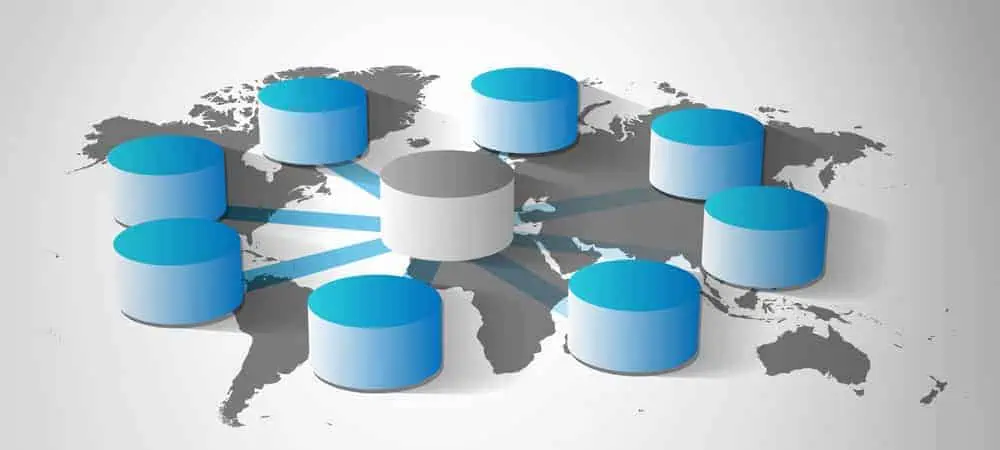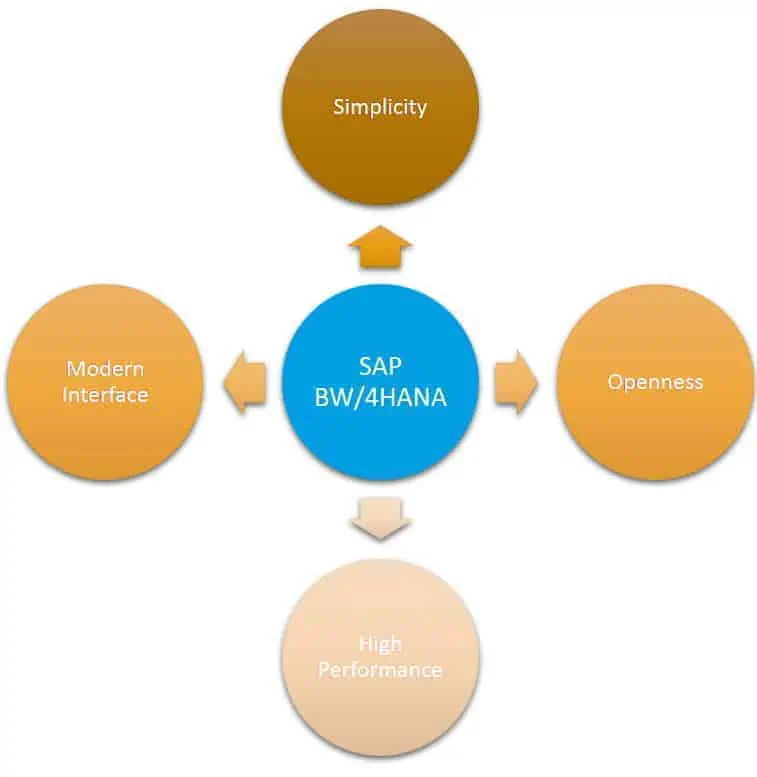BW/4 Hana and SAP Data Hub - helping to shape digital transformation


In order to enable digital innovations in established companies and pave the way for a data-driven company, a central data platform is required in which all information relevant to the company converges in structured or unstructured form, serving as a single point of truth.
SAP offers modern solutions such as Hub. How should BW/4 Hana and SAP Data be classified here, how do the two approaches complement each other and what benefits result from a modern system landscape with BW/4 Hana and SAP Data Hub?
Companies are currently investing a lot of effort in digitalization projects in order to be able to offer their customers new, attractive services and products in the future and ultimately remain competitive.
Many of these initiatives in the field of digitalization are very strongly data-driven. Be it the evaluation of sensor data from machines in order to carry out maintenance in good time to reduce downtime (predictive maintenance), or forecasting based on the company's own sales figures and corresponding market data in order to make better strategic decisions.
All of these initiatives have one common prerequisite - a stable and powerful infrastructure for data management. With the modern data warehouse solution BW/4 Hana and the data management platform SAP Data Hub as part of Leonardo, SAP offers the necessary infrastructure to master these challenges.
BW/4 Hana - a completely new approach?
Many SAP customers have been using the SAP BW data warehouse solution for strategic reporting and as a basis for planning applications for many years.
The systems have reached a certain level of maturity and are now very stable. However, the requirements for modern data management have increased enormously in recent years and can no longer be fully met by a traditional SAP BW.
The business side wants more flexibility, more agility and new, appealing tools for reporting. IT is also confronted with many other aspects - increasing data volumes, multiple data sources and the diversity of data.
 In addition, the information should of course be available in real time. For this reason, SAP has said goodbye to the "old" ways and offers a modern solution with BW/4 Hana in order to be equipped for future requirements.
In addition, the information should of course be available in real time. For this reason, SAP has said goodbye to the "old" ways and offers a modern solution with BW/4 Hana in order to be equipped for future requirements.
Unlike the previous releases (up to SAP BW 7.5), BW/4 Hana is no longer part of the NetWeaver platform and can only be run on the basis of the Hana database.
The main focus of the new implementation and future developments is on the aspects of simplicity, openness, high performance and modern interfaces.
Simplicity:
The development, expansion and operation of applications should be simplified and agile development approaches supported.
Openness: Heterogeneous data sources should no longer be an obstacle in the future. Many sources will be supported, whether for physical transfer or virtual access. Cloud-based sources and analysis tools in the cloud will play a major role in the future and their integration will become ever easier.
High Performance:
Analytical functions (OLAP) are increasingly being outsourced to the Hana database (code push-down).
Modern Interface:
Users are supported in their daily work by modern and intuitive front ends (e.g. SAP Lumira, Analysis for Office, Analytics Cloud).
BW/4 Hana now exclusively supports Hana-optimized modelling objects such as aDSOs (Advanced DataStore Objects) or CompositeProviders. Among other things, this is intended to reduce the complexity of data models, increase flexibility and, above all, support agility in development projects. Mixed scenarios - the combination of BW objects and native data models in the Hana database - are also supported and the integration of both worlds is further expanded compared to previous releases.
BW/4 Hana can be operated both on-premise and in the cloud. The initial situation for switching to BW/4 Hana is the new implementation, system conversion and landscape transformation.
 Overview with SAP Data Hub
Overview with SAP Data Hub
Nowadays, however, it is no longer just about the provision, preparation and harmonization of data for analysis and reporting purposes or for planning applications.
Meanwhile, the various data that the company has access to should also be used to support operational processes in real time in ERP or in the environment of other innovative applications.
This data exchange across system boundaries can become very complex. In most cases, there is no overall view of all possible data pools and the potential they contain.
With SAP Data Hub - a relatively new solution - the SAP Leonardo innovation platform provides the basis for the management of limitless data exchange in real time between systems, databases and applications in very heterogeneous system landscapes.
SAP Data Hub is designed to help make these highly complex data streams manageable and scalable. The central tasks of the system are data integration, orchestration and data governance.
Data exchange is controlled using so-called data pipelines. These data pipelines can be used to control the data sources, process the data and route it to a consumer. And this can, of course, take place in real time.
The data processing options are very diverse. These include the integration of various libraries for machine learning. The data is not physically loaded into the SAP Data Hub, but is processed in the source, transferred between systems/sources by SAP Data Hub or further processed in subsequent systems.
This is a key difference to a BW/4 Hana system, which of course also supports virtual access to data sources, but still offers the option of physically storing the data. Data processing therefore always takes place at the location where the data is available.
A wide variety of systems or databases are conceivable as data sources - from all SAP systems, such as SAP BW/4 Hana of course, to SAP Vora and non-SAP sources such as Apache Hadoop. This aspect in particular enables the management of all existing data sources in the company, which was previously almost impossible.
SAP Data Hub also supports open source technologies, which are becoming increasingly important in this context. As part of the SAP Leonardo ecosystem, it enables the seamless integration of other components, such as machine learning and big data.
Which solution is the right one?
You might now assume that you have to choose one solution or the other. In my opinion, however, this is not the case - both solutions and approaches have their strengths and weaknesses. In many cases, a persistent database must be built up using a BW system in order to be able to supply the necessary analytical applications.
On the other hand, very flexible and agile tools will be needed in the future to implement innovative, data-driven applications that deliver added value.
These could be implemented with the help of SAP Data Hub and other modules (machine learning, big data, analytics) from the SAP Leonardo portfolio. Integration or the use of both solutions in parallel, i.e. SAP BW/4 Hana and SAP Data Hub, is supported.
Conclusion: The path to a data-driven company
The challenge for many companies will now be to adapt or rethink their existing BI and data strategy and derive a suitable and future-proof target architecture for data management.
Of course, all these considerations also include a corresponding roadmap, which contains, for example, the preparatory measures for a migration and the migration path of the existing BW system.
The human factor also plays a decisive role in this project - a new data-oriented culture must be developed within the company, new expertise must be built up and roles must be redefined.
Each company can decide individually whether the SAP BW/4 Hana and/or SAP Data Hub solutions described play a role in the target architecture.
However, the two solutions will not be mutually exclusive; rather, both should be seen as the optimal complement to the other solution for handling data management - for building a "big data warehouse".
It is certainly not an easy path to becoming a data-driven company, but it is an exciting and rewarding one. And don't forget one thing along the way - people.








